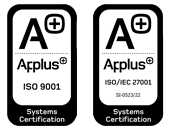Augmented reality in tourism
Augmented and virtual reality are technologies that have experienced great popularity in recent years. Thanks to new mobile devices and innovation in the tourism sector it helps to improve user experiences.
Today, tourism is one of the main economic sectors in many countries, including Spain. That is why this industry needs to update and digitise itself to be able to adapt its services to consumers by creating innovative and unique experiences.
In today’s post, we talk about how augmented reality in tourism boosts its growth and improves user experiences.

How to improve the performance of your mobile: 7 keys!
What is augmented reality?
Augmented reality is a technology that allows virtual elements to be added to reality. Through this system, graphic elements can be incorporated into a view of something real.
This technology makes it possible to combine the two worlds, the virtual and the real, and interact with each other. Moreover, augmented reality uses three dimensions. Thus, you can interact with the environment in a different way and the response is immediate.
It is becoming increasingly common to find business solutions that incorporate augmented reality. Moreover, it is a new way of communicating with users that allows different experiences to be created.
Augmented reality in tourism
As we have said in other blog articles, technology is presented to us as a tool to help us, whether to improve the efficiency of processes, digitise and save time or offer unique experiences to customers to improve their loyalty.
For this reason, one of the latest technologies that is gaining popularity and attracting the most attention is augmented reality, which is also applied in different industries. Medicine, culture, and tourism are just some of the sectors that have seen great benefits in its implementation.
The tourism sector today has a high level of digitisation, taking advantage of technology for booking accommodation, hiring transport, or accessing a hotel room, among others. All of this helps to improve user experiences.
Augmented reality is entering the tourism industry as a complement to the physical world, creating immersive experiences and increasingly personalising services.
Thanks to this type of reality, which is often implemented in the development of mobile applications, extra information such as photos, animations, graphics, etc. can be incorporated into the real world, thus creating a unique virtual world.
Accelerated Mobile Pages (AMP), what are the advantages?
Examples of augmented reality in tourism
The application of augmented reality in this sector means that traditional tourism is evolving towards smart tourism. This allows tourists to be more connected and digitised.
Today, we can already find numerous examples of how augmented reality is being applied in the tourism industry.
Museums
The use of augmented reality in museums allows users to feel part of the works of art, as well as to acquire more knowledge about them. Through an app, augmented reality offers a more personalised experience by offering a guide to explain each project. It is also possible to make a work ‘come alive’ thanks to 3D and create a totally immersive experience.
Tours and guided tours
Thanks to augmented reality, a new form of guided tours is becoming increasingly popular. To achieve more immersive experiences and get to know the places visited better, users can, through an app, interact with the environment and discover extra information about the place of interest.
This example of augmented reality in tourism makes it possible to recreate current and past spaces to learn more about their history.
Accommodation
Accommodation booking platforms such as Airbnb use augmented reality so that users can see the flat they want to book. In this way, before booking, customers can see in a more realistic way (and not only in images) the accommodation they want to book.
Gamification
Thanks to gamification techniques, developing games with augmented reality is a way to create new experiences to interact with a city while visiting it, introducing fun elements. You can create gymkhanas that make users become detectives or develop quiz-type games with questions about the place you are visiting.
At ABAMobile we have been developing mobile applications for more than 10 years and working with technologies as diverse as NFC, BLE, QR codes, or augmented reality. Contact us to develop your next project.
Get in touch with our team to start your next development project!







